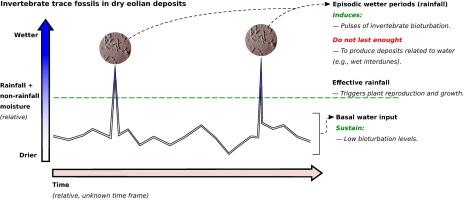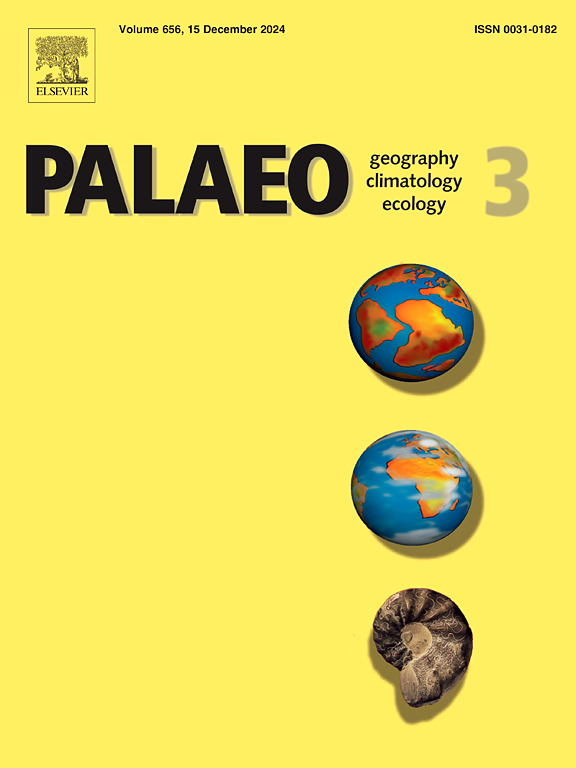生命的脉动:波图卡图古沙漠潮湿事件的化石分析证据(早白垩纪,巴西帕拉paran盆地)
IF 2.6
2区 地球科学
Q2 GEOGRAPHY, PHYSICAL
Palaeogeography, Palaeoclimatology, Palaeoecology
Pub Date : 2024-11-23
DOI:10.1016/j.palaeo.2024.112608
引用次数: 0
摘要
早白垩世Botucatu组(parparan本文章由计算机程序翻译,如有差异,请以英文原文为准。

Pulses of life: Wet events in Botucatu Paleodesert evidenced by trace fossils analysis (earliest Cretaceous, Paraná Basin, Brazil)
The earliest Cretaceous Botucatu Formation (Paraná Basin, Brazil) comprises an erg deposit developed in the central part of Gondwana and is dominated by eolian dune facies. In this paper, we improve understanding of the ichnology of eolian deposits by describing trace fossil assemblages in São Bento Quarry in Araraquara County. The trace fossils occur on paleodune slipface surfaces, and include trackways (Paleohelcura tridactyla and P. araraquarensis) and burrows (Arenicolites isp., Skolithos isp., Taenidium serpentinum, Vagorichnus anyao, and Planolites beverleyensis). The Skolithos isp. and Vagorichnus anyao specimens also occur in clusters in more intensely bioturbated beds. We interpret these assemblages as evidence of episodic wet events, which were unable to generate subaqueous facies, but triggered plant growth and invertebrate proliferation. Based on studies of modern hot deserts, we infer that the overall longstanding water input promoted some primary productivity sustaining striving invertebrates, recorded as low bioturbation levels. Episodic wet events controlled the bioturbation bursts by increasing the primary productivity and inducing consequent invertebrate proliferation. We propose that these bursts of invertebrate bioturbation observed along the stratigraphic section of dry facies can be taken as the main ichnological characteristic of a dry eolian system. We also propose refinements to the Octopodichnus–Entradichnus ichnofacies model, addressing unsolved issues to enhance the interpretation of ancient eolian environments.
求助全文
通过发布文献求助,成功后即可免费获取论文全文。
去求助
来源期刊
CiteScore
5.90
自引率
10.00%
发文量
398
审稿时长
3.8 months
期刊介绍:
Palaeogeography, Palaeoclimatology, Palaeoecology is an international medium for the publication of high quality and multidisciplinary, original studies and comprehensive reviews in the field of palaeo-environmental geology. The journal aims at bringing together data with global implications from research in the many different disciplines involved in palaeo-environmental investigations.
By cutting across the boundaries of established sciences, it provides an interdisciplinary forum where issues of general interest can be discussed.

 求助内容:
求助内容: 应助结果提醒方式:
应助结果提醒方式:


